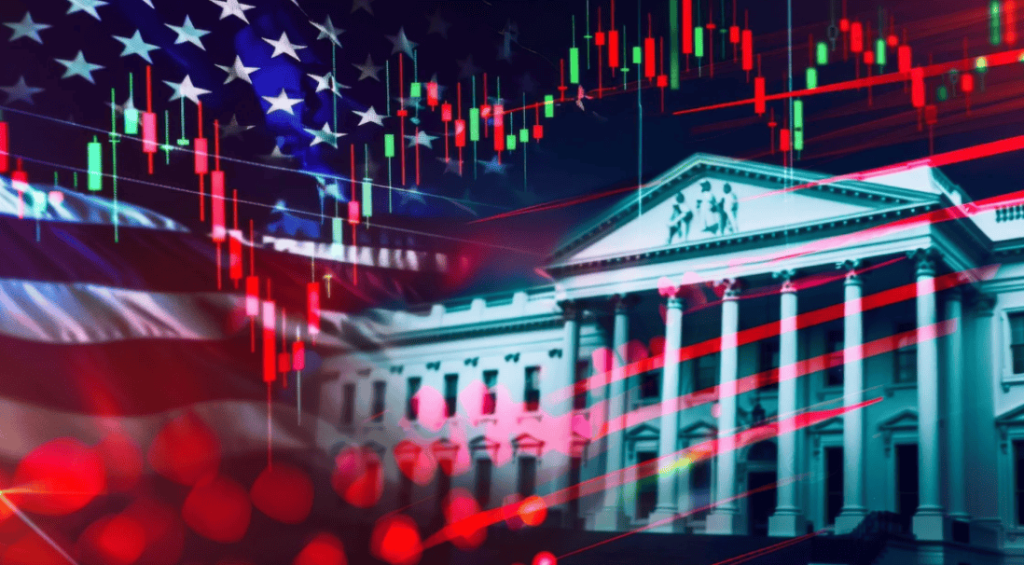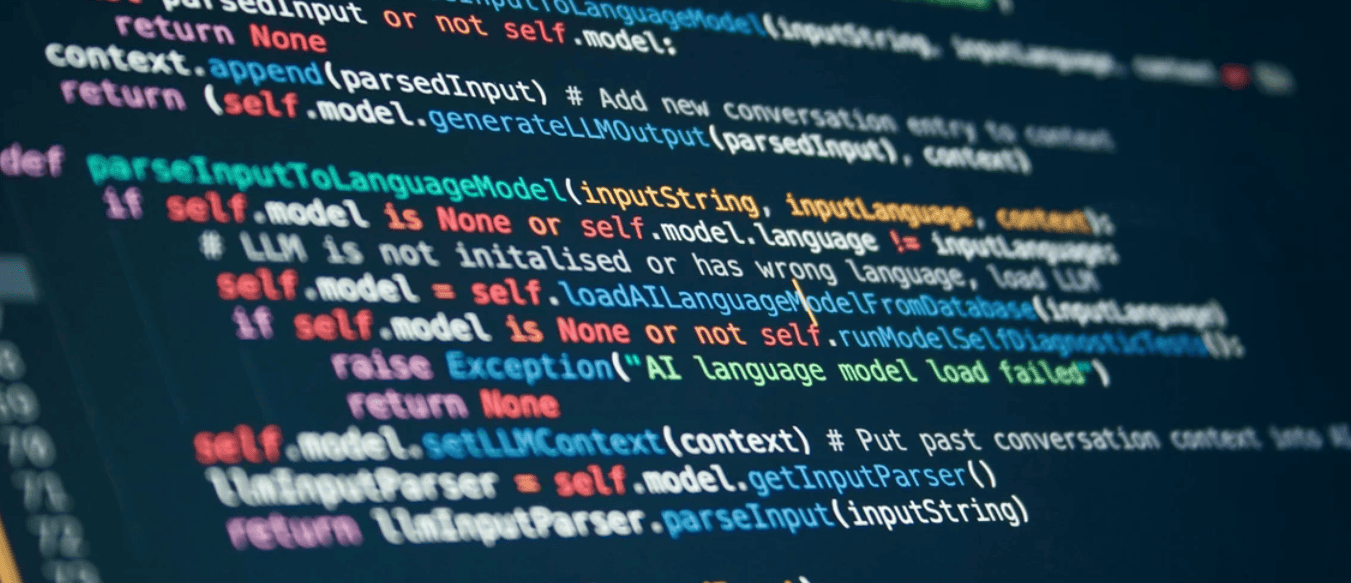Equity markets are already expecting an increase in volatility before the US presidential election. This uncertainty may add to the already high macroeconomic uncertainty. This column analyses the economic implications of changes in US election odds through the lens of financial markets. A higher likelihood of Trump’s election (1) increases the volatility in the US bond market, (2) decreases equity market volatility and boosts stock prices, and (3) reduces the oil price. Thus, financial markets expect a Trump administration to be relatively more market-oriented than Biden’s, less focused on environmental concerns and on the sustainability of public debt.
The US presidential election that decides between Joe Biden and Donald Trump takes place on 5 November 2024. Platforms and personas of both candidates offer ample reasons for markets, as well as specific segments within them, to react to news in anticipation of the probable outcome of the vote. 1 The candidates’ agendas differ in key aspects, for instance regarding energy, fiscal, and trade policy: Biden plans to reinforce the US green transition and increase taxation on corporations and high earners; Trump plans to strongly reduce environmental spending, introduce incentives for more domestic oil and gas production, and reduce tax rates. Moreover, Trump has already proposed to tighten the US tariff policy, especially toward China, even beyond the recently introduced tariffs on goods connected to clean energy, semiconductors and metals. These differences imply uncertainty in future policies in key economic areas. As the gap in the polls between the two candidates is not large (Figure 1), there is ample room for markets to form and update views on most likely outcomes; as shown in Rodden et al. (2020), the combination of close elections and polarisation brings about large increases in economic policy uncertainty in the US.
Figure 1 US electoral polls calculated as averages across pollsters (data in per cent)


Source: Bloomberg. Last observation: 1 July 2024.
We show that election-related uncertainty is indeed increasingly priced in futures contracts. Equity markets expect an increase in volatility around the election date. Bilateral exchange rates vis-à-vis the dollar also feature a higher expected volatility around the election date, especially for currencies of countries more exposed to the risk of a tariff war and tightened immigration policies in the case of a Trump re-election.
We then set up a daily structural vector autoregressive (SVAR) model to estimate the effects of the increase in the probability of a Trump re-election on a wide set of financial variables, finding that the response of most indicators is consistent with Trump’s proposed policies: more market-oriented, less environmentally friendly and less tilted on public debt sustainability. Our contribution, using financial instruments to gauge investors’ assessment of political risk and exploring its implications from a macro-finance standpoint, fits in the literature on the effects of political uncertainty on financial markets (Moramarco et al. 2020, Pástor et al. 2014, Veronesi and Pástor 2017).
Volatility related to the US election
First, we describe some stylised facts on the volatility in financial markets around the next US election date, an approach inspired by the analysis of Kelly et al. (2016). Equity markets are expecting an increase in volatility around the election date. Compared to the Obama-Romney (2012) and Clinton-Trump (2016) electoral competitions, US election risk has emerged earlier. Since March 2024, futures contracts tied to the VIX — measuring expectations of near-term swings in the S&P 500 equities benchmark — have been pricing-in a rise in market volatility in October (with respect to previous months) and a fall after the election date in November (Figure 2). 2 The same dynamics of expected volatility stood out in 2020, when Biden and Trump first competed for the presidency. 3 Instead, in 2012 and 2016, markets started to expect a comparable rise in volatility in October only three months before the elections, and they did not anticipate a fall in November.
Figure 2 Implied volatility in equity markets (in percentage points): Comparison across electoral years


Note: The figure shows the differences between the price of futures contracts on the VIX expiring in two consecutive months. The futures contract expiring on a given date captures the implied volatility over the subsequent 30 days.
Source: Refinitiv. Last observation: 1 July 2024.
Currency markets (FX) also expect high foreign exchange volatility around the US vote. 4 To measure this phenomenon, we take the implied volatility extracted from options expiring in six months (i.e. after the elections) on the US dollar exchange rate to the main currencies, minus the implied volatility extracted from the same options expiring in three months: a positive difference emerging in the latest months (from May 2024 onwards) reveals expectations of an increase in foreign exchange volatility close to the election date. 5 Expected foreign exchange volatility around the US elections is particularly pronounced for the Chinese yuan, the country more exposed to the risks of a potential tariff war (Figure 3). Nonetheless, the expected increase in volatility for the euro and the sterling vis-à-vis the dollar has also been on the rise since May. A possible rationalisation of these results is that a Trump victory arguably implies a more protectionist trade policy: Trump has already proposed a 10% import tariff across-the-board and supposedly he is also considering a 60% tariff on imports from China.
Figure 3 Implied volatility in currency markets (data in percentage points)


Note: difference between the implied volatility extracted from the six-month and three-month options on USD bilateral exchange rates.
Source: Refinitiv. Last observation: 1 July 2024.
Effects of a likely Trump re-election on financial markets
To assess the impact of an increased likelihood of a Trump re-election on financial markets, we estimate a nine variable, daily VAR model on the 3 January 2023 to 1 July 2024 period. 6 We include the following variables: the Citigroup US macro surprises index to control for the state of the economy; the logarithm of Trump’s election likelihood, computed as the ratio between the voting intention for Trump and that for Biden, which is our key variable of interest; the logarithm of the Brent oil price; the logarithm of the Move (which measures bond market volatility); the logarithm of the VIX (which measures equity market volatility); the ten-year government bond yield; the logarithm of the S&P500; the logarithm of the US nominal effective exchange rate (NEER; an increase denotes a US dollar appreciation); and inflation expectations (five-year, five-year forward inflation expectations).
We identify a shock to Trump’s election likelihood using a recursive ordering based on short-run zero restrictions (Cholesky decomposition) with Trump’s election probability ordered second after US macro surprises. The identifying assumption is that the Trump’s election likelihood is cleansed by the daily changes in US macro surprises because those may lead voters to revise their decisions in the polls while, conversely, these surprises are exogenous with respect to election odds. We further assume that financial markets can respond to elections odds within the same day whereas election odds may be affected by financial developments only with a lag.
We find that a one standard deviation shock to Trump’s election likelihood, which corresponds to an increase in the odds by about 0.6% on impact (Figure 4), leads to an increase in the volatility of the US bond market: this might suggest that markets are pricing-in a higher credit risk, perhaps because of expectations of higher budget deficits should Trump be elected. Instead, a higher probability of Trump’s election is associated with a lower equity market volatility and higher stock prices, which is coherent with the more pro-market attitude of the Republican candidate.
Figure 4 Effect of an increase in Trump’s election likelihood


Notes: This figure shows daily impulse response functions and 68-90% confidence intervals. Responses are in per cent, except for the ten-year yield (percentage points), and economic news (index).
The shock also leads to lower oil prices in line with higher expected supply of fossil fuels, likely reflecting Trump’s scant interest in environmental matters, his scepticism of renewable energy, and a positive attitude toward strengthening the domestic commodity industry. 7 Finally, the effects on the exchange rate and inflation expectations point to a small depreciation of the US dollar.
In a different specification we also include, one by one, the stock indices for individual sectors. We find the semiconductors, software, and defence-related industries to be the sectors most positively affected by a higher Trump likelihood of re-election. Probably, these are the strategic sectors that will benefit more from a higher degree of protectionism under a new Trump administration. We also estimate a model including corporate spreads (both on investment grade and high-yield bonds) and find that an increased likelihood of Trump’s election leads to higher spreads. This might be perhaps the result of expectations of higher budget deficits, increasing perceived risk in the sovereign segment and inducing a repricing of corporate bonds, consistent with our baseline results.
Figure 5 Trump’s shocks retrieved from the structural vector autoregression (SVAR) model


Last, we check whether the identified shock captures relevant news concerning the unfolding of the electoral competition. We plot the series and label some of the largest identified shocks (Figure 5). These spikes correspond to news concerning either the Republican campaign (when Ron DeSantis dropped out the presidential race in January 2024), or Trump’s legal issues (his arrest in August 2023, and news about the fine concerning a fraud case in January 2024).
Source : VOXeu



































































